How to Setup Samba Server in RHEL, Rocky Linux and AlmaLinux
Sharing files is an essential part of server administration. It allows sharing of resources across the network which are needed by users to carry out their tasks. One of the widely used file-sharing software is Samba.
General Configuration (/etc/smb.conf)
Samba, a re-implementation of the popular SMB (server message block) protocol, is a stable and free application that allows sharing of files and print services across a network. The software is installed on a central Linux server from which shared files can be accessed from both Linux and Windows systems.
In this guide, we will walk you through the installation of the Samba Server on RHEL-based distributions such as CentOS Stream, Rocky Linux, and Alma Linux.
Step 1: Install Samba in Linux
To get started out with Samba, install the Samba core packages including the client package:

The command installs the packages specified along with the dependencies as displayed on the output. After the installation is complete, you will get a summary of all the packages that have been installed.
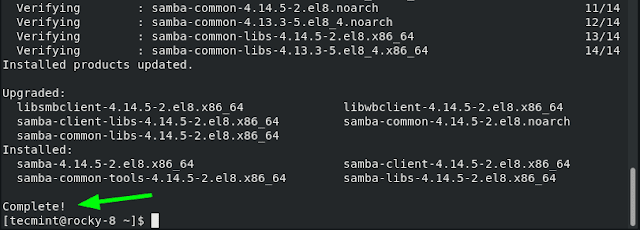
Step 2: Create and Configure Samba Shares
Once all the samba packages have been installed, the next step is to configure the samba shares. A samba share is simply a directory that is going to be shared across client systems in the network.
Here, we are going to create a samba share called /data in the /srv/tecmint/ directory path.

Next, we are going to make some configurations in the smb.conf configuration file which is Samba’s main configuration file. But before we do so, we will back up the file by renaming it with a different file extension.
Next, we are going to create a new configuration file.
We will define policies on who can access the samba share by adding the lines shown in the configuration file.
Save and exit the configuration file.
To verify the configurations made, run the command:

Next, start and enable Samba daemons as shown.
Be sure to confirm that both the smb and nmb daemons are running.
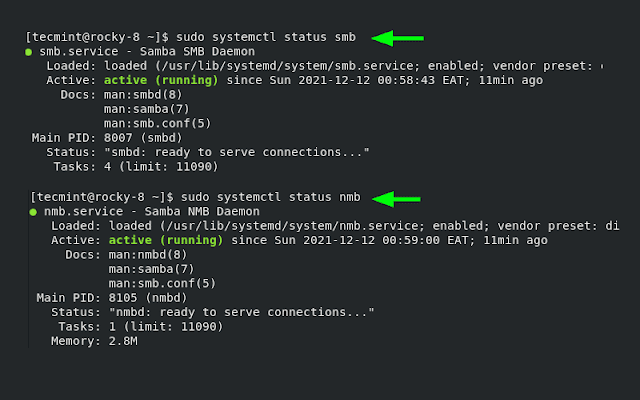
Step 3: Accessing Samba Share from Windows
Thus far, we have installed samba and configured our samba share. We are now ready to access it remotely. To do this on a Windows client, press the Windows logo key + R to launch the Run dialog.
In the textfield provided, enter the samba server’s IP address as shown:

The following window labeled ‘Public’ will pop up. Remember, this is the directory that points to our samba share in the /srv/tecmint/data directory.
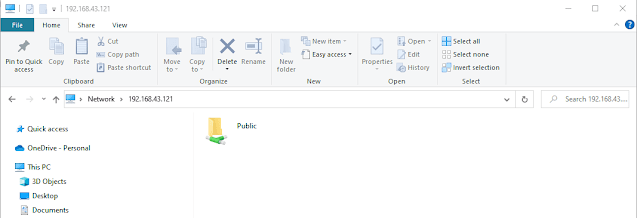
Currently, our directory is empty as we have not created any files. So, we will head back to our terminal and create a few files in the samba share directory.
Now, we will navigate to the ‘Public‘ folder where the files we created earlier on will be displayed.
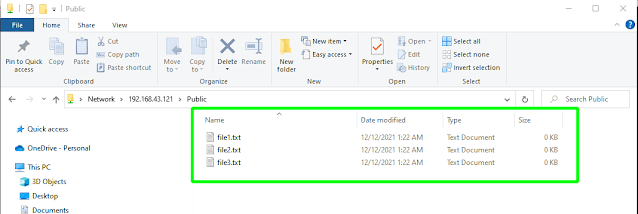
Perfect. We have successfully managed to access our samba share. However, our directory is accessible to anyone and everybody can edit and delete files at will, which is not recommended especially if you plan to host sensitive files.
In the next step, we will demonstrate how you can create and configure a secure samba share directory.
Step 4: Secure Samba Share Directory
First, we will create a new samba user.
Next, we will configure a password for the samba user. This is the password that will be used during authentication.

Next, we will create a new group for our secure samba share and add the new samba user.
Thereafter, create yet another samba share which will be securely accessed. In our case, we have created another directory in the same path as the
Then configure the file permissions for the samba share
Once again, access the Samba configuration file.
Add these lines to define to secure samba share.
Save the changes and exit.
Finally, restart all the samba daemons as shown.
When you access your server this time around, you will notice an additional ‘Private‘ folder. To access the folder, you will be required to authenticate with the Samba user’s credentials. Provide the username and password of the user you created in the previous step and click ‘OK’.
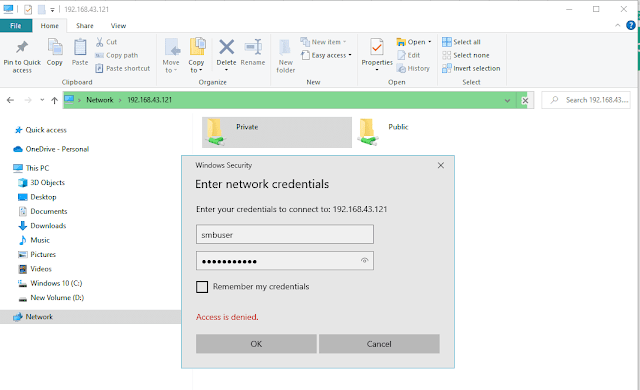
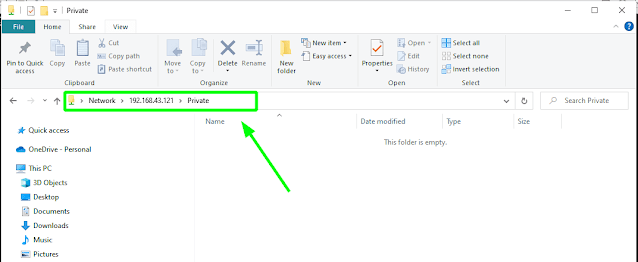
Step 5: Accessing Samba Share from Linux Client
To access the share from a Linux client, first, ensure that the Samba client package is installed.
Then use the smbclient command as follows

And this concludes this guide on setting up Samba on RHEL, CentOS Stream, Rocky Linux, and AlmaLinux. Your feedback on this guide will be highly appreciated.
Install and Configure Samba
1. Installing Samba
To install Samba, we run:
sudo apt update
sudo apt install samba
We can check if the installation was successful by running:
whereis samba2. Setting up Samba
Now that Samba is installed, we need to create a directory for it to share:
mkdir /home/<username>/sambashare/
The command above creates a new folder sambashare in our home directory which we will share later.
The configuration file for Samba is located at /etc/samba/smb.conf. To add the new directory as a share, we edit the file by running:
sudo nano /etc/samba/smb.conf
At the bottom of the file, add the following lines:
[sambashare]
comment = Samba on Ubuntu
path = /home/username/sambashare
read only = no
browsable = yes
Then press Ctrl-O to save and Ctrl-X to exit from the nano text editor.
What we’ve just added
- comment: A brief description of the share.
path: The directory of our share.
read only: Permission to modify the contents of the share folder is only granted when the value of this directive is
no.browsable: When set to
yes, file managers such as Ubuntu’s default file manager will list this share under “Network” (it could also appear as browseable).
Now that we have our new share configured, save it and restart Samba for it to take effect:
sudo service smbd restart
Update the firewall rules to allow Samba traffic:
sudo ufw allow samba






